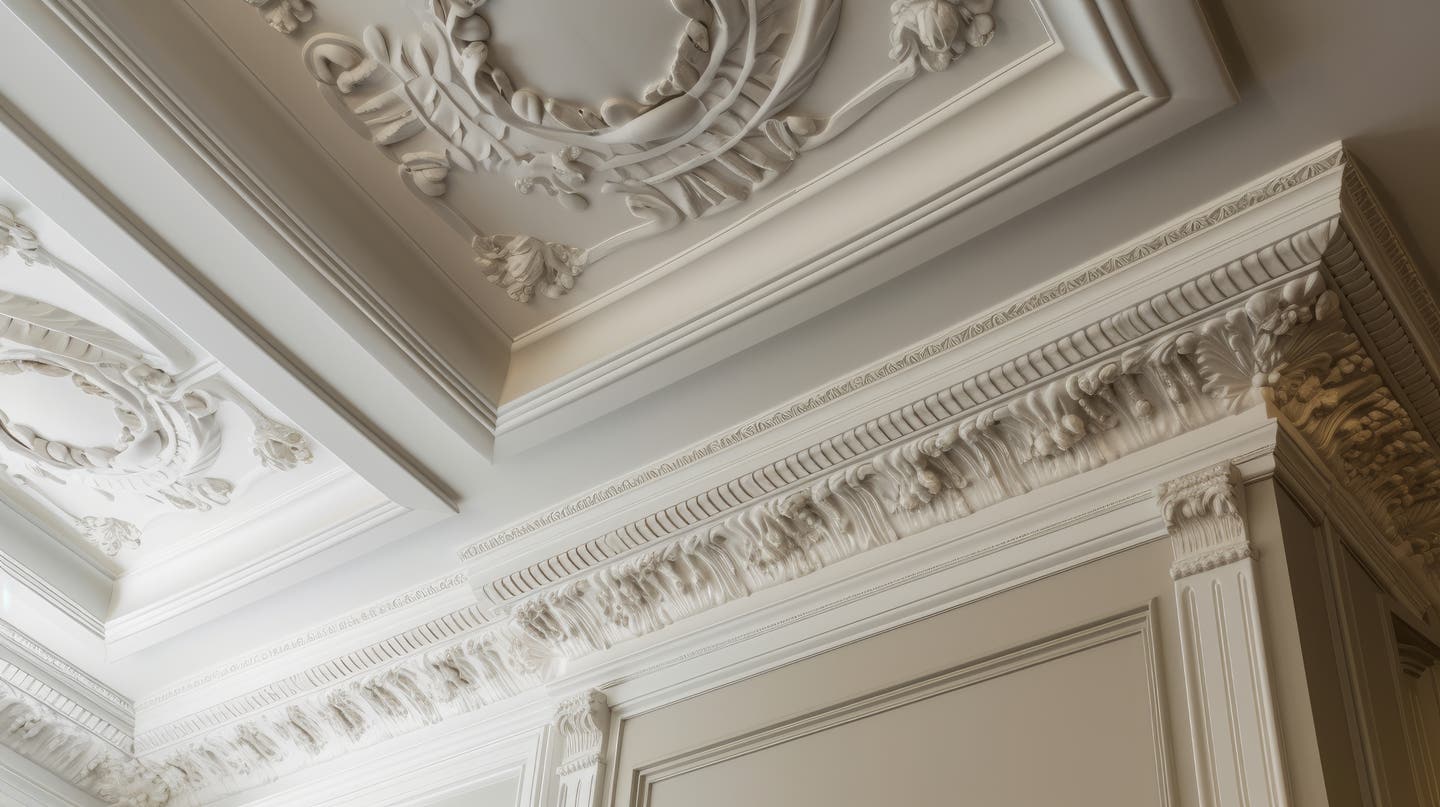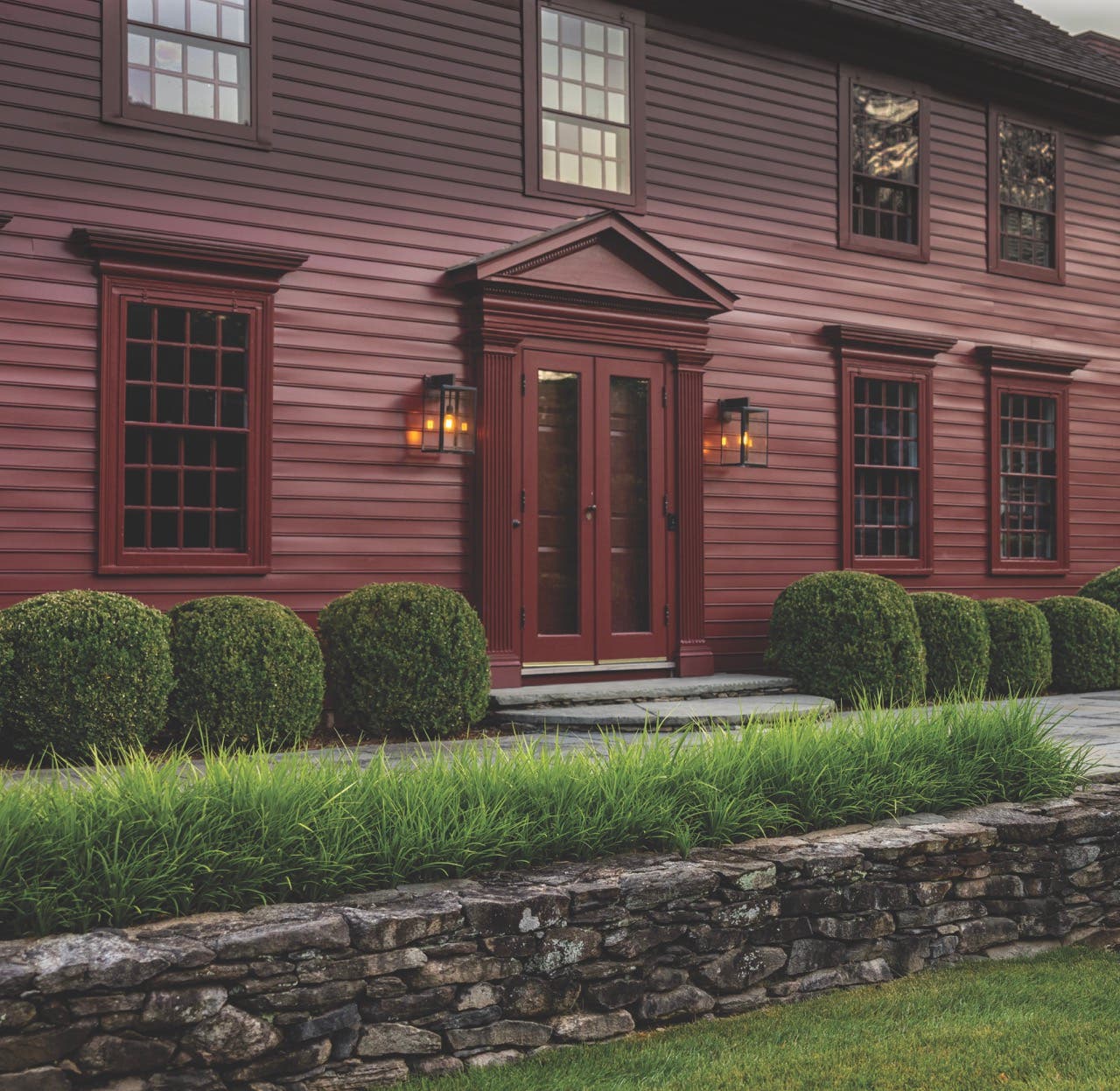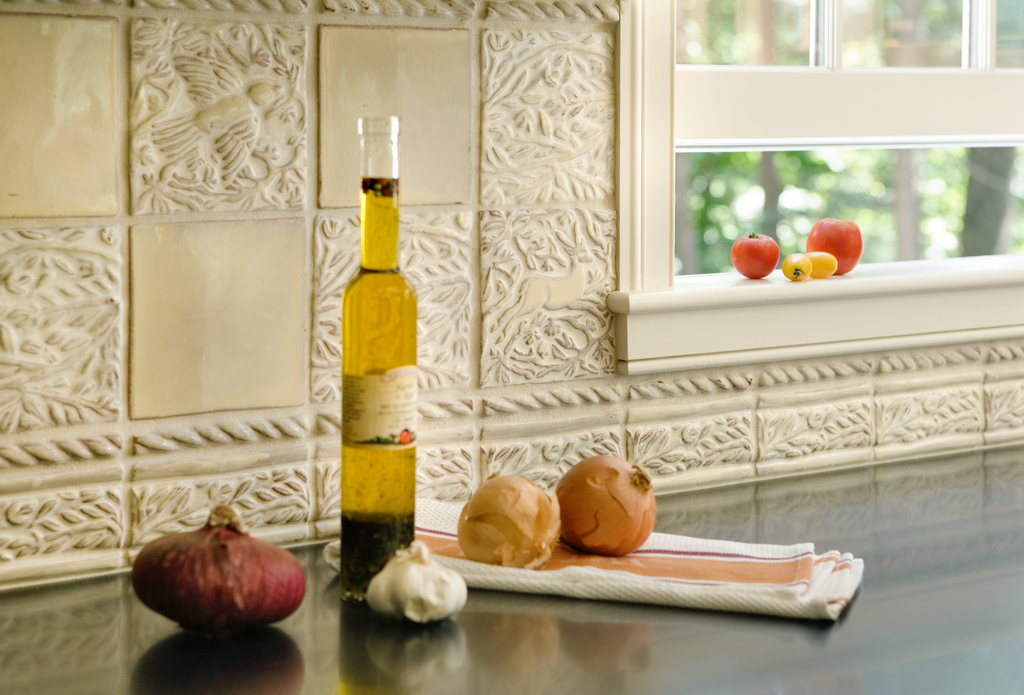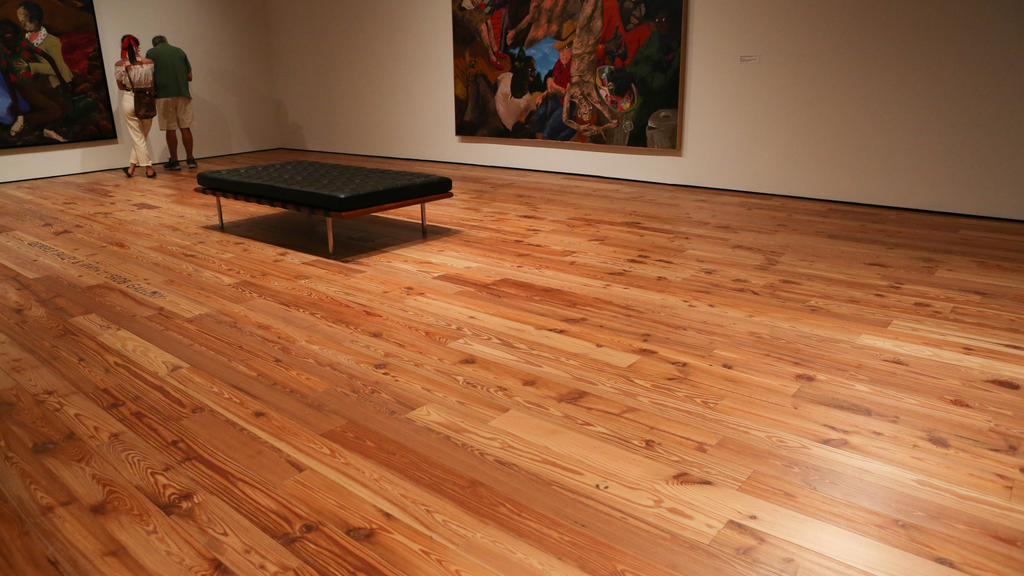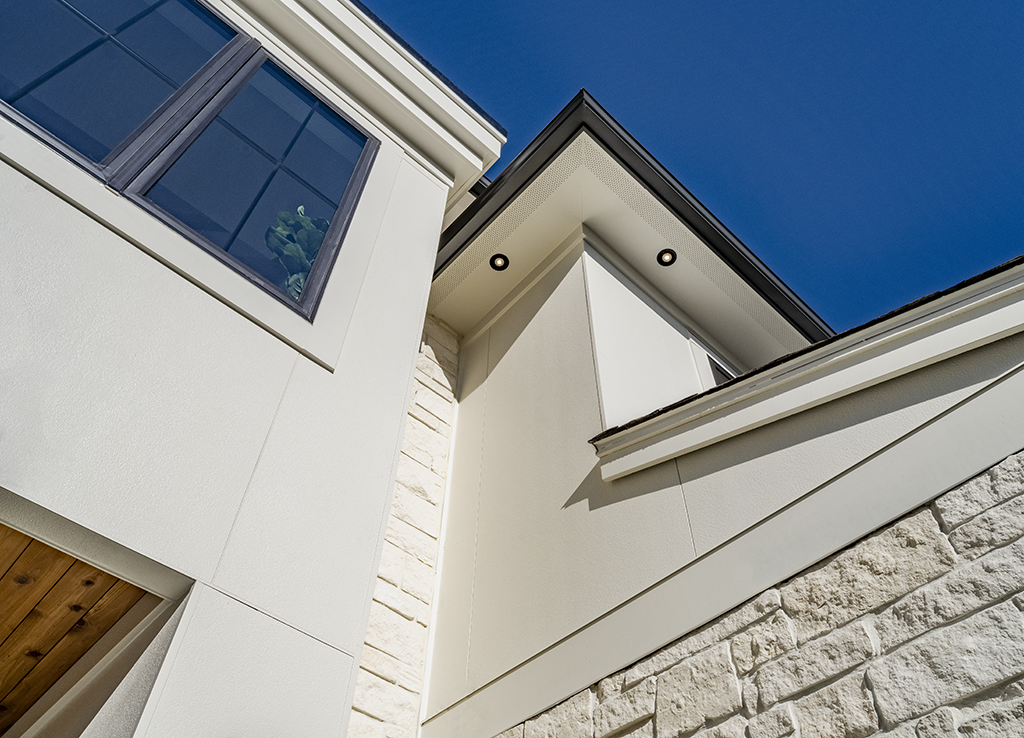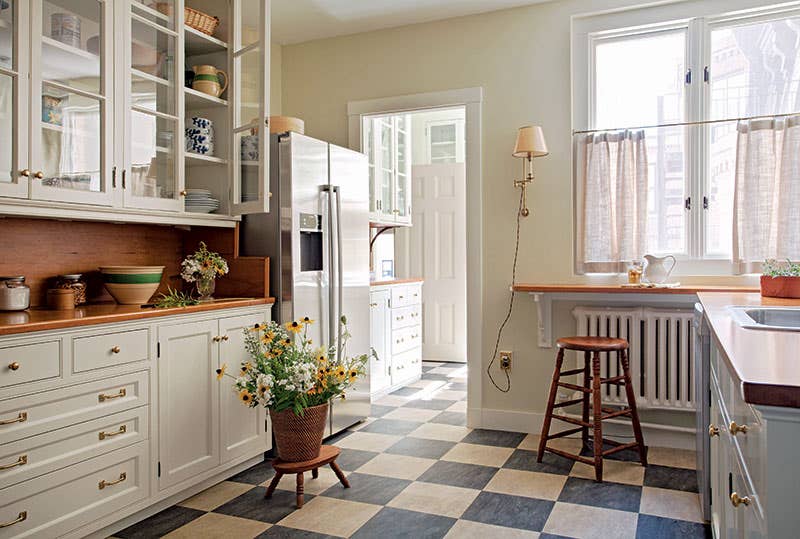
Product Reports
Inherently Traditional: Eco-Friendly Kitchen Surfaces

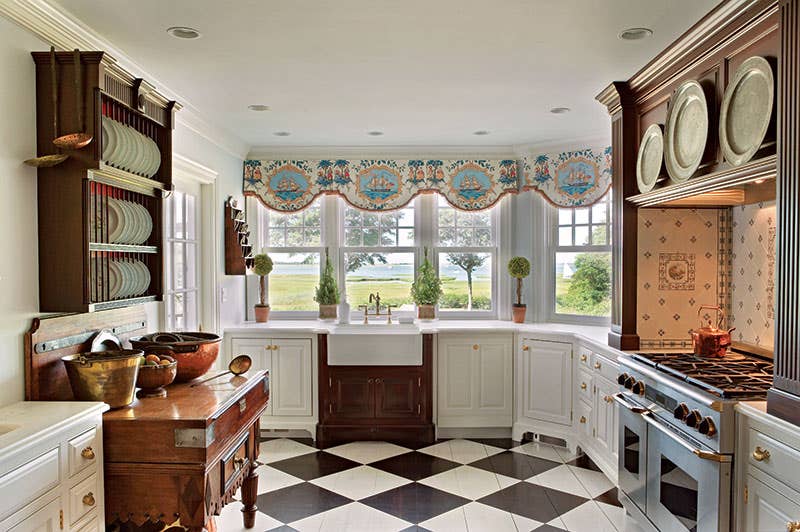
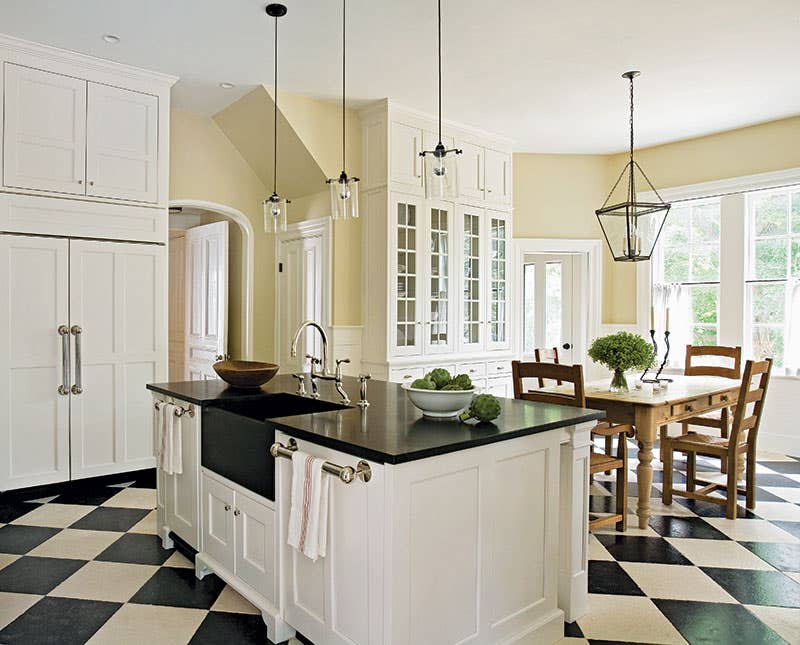
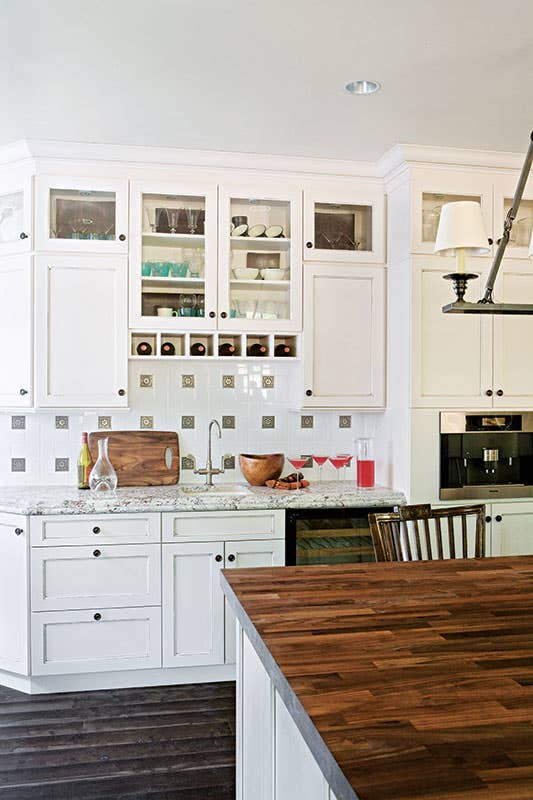
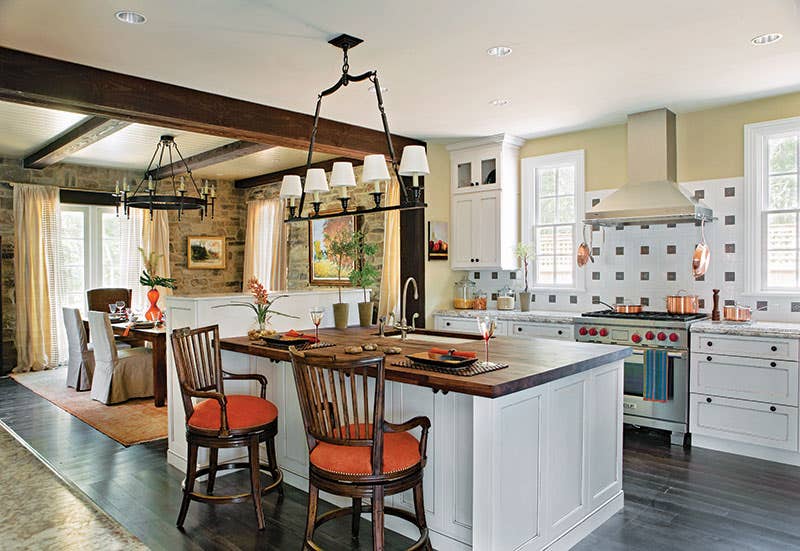
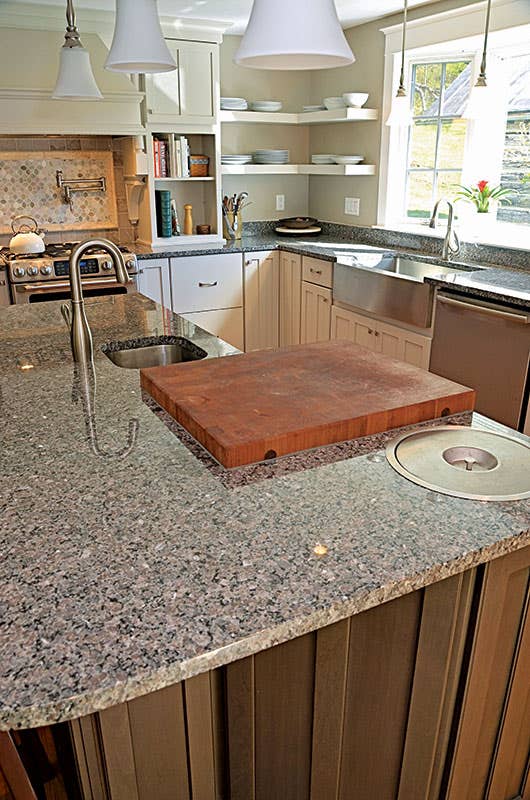
What defines a building material as sustainable or “green” can be maddeningly hard to pin down, but some concepts that have consensus behind them are durable, biobased, and avoiding hazardous ingredients. Turns out, another concept that often applies is traditional, especially in the case of kitchen surfaces that are as classic as they are 21st century.
Linoleum
Resilient flooring—think sheet vinyl, vinyl composition tile, and rubber—remains the image of a modern kitchen floor by virtue of its water resistance and knack for cushioning dropped china and standing feet. Yet original resilient flooring—linoleum—is also among the most eco-friendly. “It’s an all-natural, 100 percent bio-based product,” explains Jennifer Farkus with Forbo Flooring NA, a major global supplier. “It’s made with linseed oil, pine rosin, wood flour, limestone, jute—all natural ingredients.”
Invented by Englishman Frederick Walton in the 1860s as an alternative to floorcloths for living rooms, linoleum was originally printed with decorative patterns to resemble oriental rugs. After the 1870s, heavier, solid-color versions of his wunderflooring found a new market in hospitals and—who’d have guessed?—naval vessels. Since it was made of natural, non-toxic ingredients and deemed anti-microbial due to its ever-oxidizing linseed oil binder, linoleum made a great match with medicine. What really appealed to industry, however, was the way it came in wide rolls that yielded nearly seamless floors (and few dirt-collecting cracks) with a new level of toughness. Linoleum stood up for decades without apparent wear, absorbed traffic, and even dampened the impact of shrapnel on decks of the U.S. Navy—hence the nickname “battleship linoleum.”
When the new gospel of scientific sanitation caught on in houses after 1900, linoleum invaded kitchens practically overnight. Linoleum remained the perfect progressive flooring through the 1940s, but by the Go-Go 1960s it was becoming an anachronism compared to trendier and cheaper vinyl and oil-based pseudo-linoleums.
That might have been end of the linoleum story except that manufacturers in Europe, who continued to make sheet linoleum, began finding a niche in the American market in the 1990s, especially for the growing interest in environmentally friendly products. In kitchens especially, Farkus says, “Some people like to use Marmoleum sheet goods,” referring to the classic line of glue-down linoleum in scores of colors and solid, marbled, and striated patterns.
While the kaleidoscopic variety of patterns, borders, and inlays of linoleum’s golden age were watered down by the post-World War II era, new installation types and product dimensions are part of what grows linoleum’s reputation in its second century. Farkus’s company is a good example, offering traditional sheet versions of their linoleum line as well two other, more versatile products. “We have Marmoleum Modular, which comes in different tile sizes (10” x 10”, 10” x 20”, and 10” x 40”) and Marmoleum Click, a very popular product for residential areas like kitchens.”
The Modular product has a backing just like traditional linoleum, and glues down with one of the Marmoleum adhesives. Farkus says the different colors and tiles sizes in Modular makes a wide variety of patterns possible. “Some people will do a herringbone or just a checkerboard floor; it really just depends upon what the user is looking for.” By comparison, the Click product has a cork backing and a patented assembling system that allows clicking the pieces together to install on a floor. “There’s no need for any kind of adhesive; they can be self-installed without hiring a professional installer.”
Whether the goal is eco or retro, linoleum brings something to the kitchen table. “I believe any Marmoluem product would work great, however the 10” x 10” Marmoleum Modular tile really lends itself well to get a period look, such as from 1930s or ’40s”, says Farkus. “Because you can intermix so many of the different colors and sizes, it’s just a matter of personal style."
Cork
Another eco-friendly kitchen surface that gets high marks both historical and environmental is cork flooring. In fact, as many fifth-graders know, cork is actually bark. Harvested every nine years from a Mediterranean-region oak tree, cork is biobased and sustainable (the trees are unharmed). Cork, the source of bottle stoppers for centuries, dates back to 1889 as flooring. Once manufacturers learned how to form granules left over from stopper-making into blocks using heat and pressure, they could slice the blocks into tiles. “Cork has 200 million closed air cells per cubic inch,” explains Ann Wicander of WECork in Exeter, New Hampshire, “which gives it that resilience and comfort underfoot, plus thermal insulation—warmth—and sound control.” An attractive, sound-deadening, and easy-on-the-foot flooring for public libraries, churches, hospitals and private billiard rooms, cork inevitably landed in kitchens. “Cork has always been a good choice for kitchens,” says Wicander. “You’re walking on air, which is particularly desirable in kitchens where people are always standing.”
Traditionally cork tiles come in three colors, says Wicander. “Basically, the longer you expose cork to heat, the darker it gets.” At her company, light is the starting color that results when all the cork particles are agglomerated together, adhered into a block, and then cooked a bit for curing. Medium is cooking the cork a little longer, and dark is cooking the cork even more. “What’s nice about cork floors is that you can sand and refinish them as you would an average wood floor,” she says. “Since the color is all the way though the tiles, they come back looking new again. You can’t do that with a veneered product.”
Not that refinishing should be a looming necessity. “When cork flooring was introduced, the initial finish was just wax,” she says, “so the floors had to be sanded and refinished quite often. Now the finishes are so much better.” Her company’s basic finish is an aluminum oxide urethane called Greenshield and fine for residential applications.
The floors themselves have continued to innovate as well. “The original cork floors from 100 years ago—which we still sell—are 12” x 12” tiles,” says Wicander. “They’re solid cork, typically 3/16” or 5/16” thick that glue down.” In other words, they install by applying contact adhesive to the substrate and the tile bottom, letting it dry, and then positioning the tile. Wicander notes that the process takes attention to detail because the attachment is immediate, but that’s what clients often choose to replace or add onto the tiles in a mid-century modern building. “The 1930s to the 1960s were the heyday of cork flooring, especially with architects like Frank Lloyd Wright, and his son Lloyd Wright, who loved cork.”
“People still use traditional tiles in kitchens,” she says, “but now they also go for a floating floor.” This product is cork on the bottom and top of an HDF (high density fiberboard) center joined with a Unilin Click system. “It’s very easy to install with just a tap-and-block method, and it has the same wear-ability as the glue-down tiles.” The floating floor line includes formats that can emulate and be compatible with a historic cork floor. “We have the traditional cork flooring line, which is 12” x 36”, or we have a plank with a bevel, which is 7” x 36” and then we have what we call a tile, which is 18” x 24”.” She adds, “A good friend with a 1950s house and cork tiles wanted to match them in an addition. She didn’t want to bother with the glue-down, so she just went with the floating floor in the classic look.”
Butcher Block
As an essential kitchen surface, countertops easily compete with floors in importance, and among the cornucopia of countertop stones and synthetics, wood still ranks high, especially in the form of butcher block.
Far from what might appear to be a newfound industrial-chic material, butcher block counters date back at least as far as the first modern kitchens, prominently displayed in photographs from the 1910s and earlier. Records do not dice kitchen history down to the dawn of the first butcher block counter, but Steve Pless at John Boos and Company in Effingham, Illinois, a major manufacturer of butcher block, provides an early benchmark. “Our company was started in 1887 when Konrad Boos, a blacksmith, put a big section of sycamore tree on legs to deaden the blows from his hammer. When a visiting butcher saw the block, and wanted one for his shop, thus began the butcher block business for John Boos and Company.” Today the company is heavily invested in supplying the food service industry with stainless steel as well as wood products, which are widely accepted by the NSF (formerly the National Sanitation Foundation).
As anyone passionate about cutlery knows, there are two ways to make butcher block: end-grain and edge-grain. Explains Pless,“If you look down on the countertop or block and it appears like you’re viewing though the trunk of the tree, that’s what we call end-grain.” This type of construction is what’s in a big old butcher block in a meat market, he says. It tends to be the hardest, most durable type that shows the least wear, but it also serves another purpose. “If you think about all those grains in the wood standing on-end like bristles on a brush, they offer less resistance to a knife blade, so actually knives stay sharper longer with an end-grain product.”
In edge-grain, the other, more common butcher block construction, strips of hardwood are arranged side-by-side, then joined together similar to a bowling lane. Edge-grain construction offers more view of the wood color or character, but the edges of each strip of wood, which are the cutting surfaces, can show wear over time. End-grain countertops are a bit more labor-intensive to manufacture than edge-grain countertops, Pless says, so they tend to be a little pricier. Also they are slightly bigger on average and often heavier, but they are frequently the butcher block counter of choice for serious cooks.
Pless notes that choice of wood species for butcher block has largely to do with color. “We offer a light color (maple), a medium color (cherry), and a dark color (walnut); maple is probably the most widely accepted species for countertops.” He adds though that these three tight-grain woods are also traditionally better for food preparation. “Liquids don’t soak into them as fast, and they offer fewer voids than other woods, so they’re easier to clean.”
Today as in the past, butcher block can be more than just countertops. The material is used to make backsplashes and to top kitchen furniture, such as carts and worktables. From here it’s a short step to covering an entire island with butcher block which, in today’s mega-showcase kitchens can approach a shuffleboard-size surface, as Pless knows. “In our catalog, we have butcher block sizes from 12” to 14.5” – that’s 12’—but we can actually do a countertop that is 5’ by 14’ in one piece, so our capability is to go very large.” By comparison, shelving, another popular application, is a slice of pie. “From general-purpose countertops, on, people will use butcher block for anything.”
Gordon Bock, co-author of The Vintage House (www.vintage
housebook.com), lists “What Time is Your Kitchen?” and his other seminars and keynote addresses at www.gordonbock.com.




